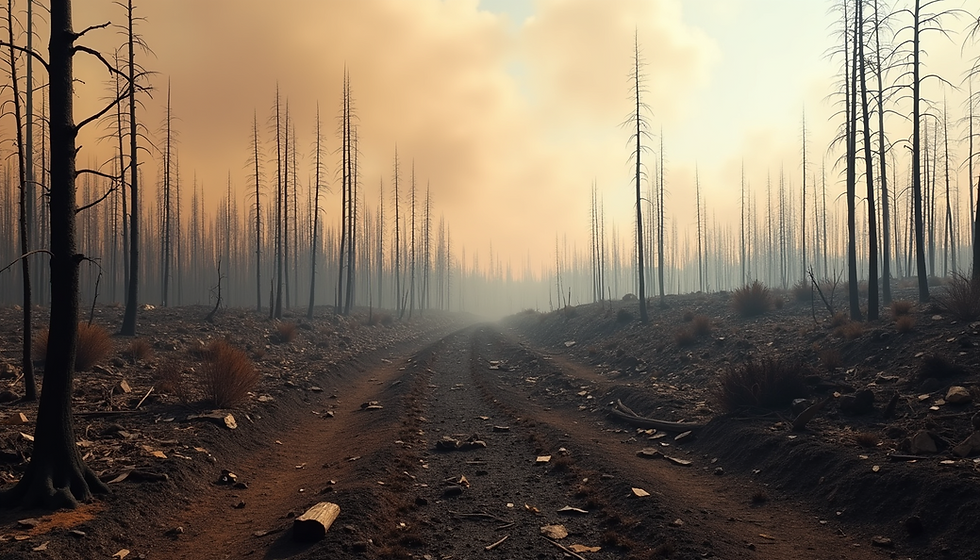Essential Guidelines for Safe Water Treatment While Hiking, Camping and Traveling
- Jon Stevens
- Jul 18
- 4 min read
Water is essential for survival, especially when you're out in nature. Access to clean water can enhance your experience, whether you're hiking through breathtaking landscapes, camping under a starry sky, or exploring remote areas. In this guide, we will provide crucial tips for ensuring safe water treatment, so you can stay healthy and hydrated during your adventures.
Understanding Water Contamination
When enjoying the outdoors, you may come across water sources that look appealing but could be harmful. Rivers, lakes, and streams often contain germs like bacteria, viruses, and parasites. These pathogens can lead to illnesses such as diarrhea, nausea, and even severe conditions like giardiasis, which affects about 2% of the population globally each year. Recognizing the risks of untreated water is vital for enjoying your adventure safely.
Remember that untreated water can cause gastrointestinal problems. Each year, about 1 billion people suffer from waterborne diseases. By taking precautions with your water treatment methods, you can enjoy your activities while minimizing the risk of getting sick.
Water Treatment Methods
Effective water treatment can be achieved through several methods, each with its own strengths and weaknesses. Here are the most common approaches:
Boiling Water
Boiling water is one of the most reliable methods for eliminating pathogens. To use this method, bring water to a rolling boil for at least one minute. At altitudes above 6,500 feet, boil for three minutes. This method kills most harmful microorganisms, including E. coli and Giardia.
However, it's important to note that boiling does not remove chemical contaminants or dirt. If you're in an area with uncertain water quality, consider using a combination of treatments.
Chemical Treatment
Chemical treatments involve using purification tablets, such as iodine or chlorine dioxide. These tablets are small, light, and can purify water in about 30 minutes. However, it’s crucial to follow the instructions closely to ensure effectiveness.
Keep in mind that chemical treatments may slightly alter the taste of the water. Additionally, not all tablets effectively eliminate viruses. It’s essential to choose a product that is designed to treat the specific pathogens you may encounter.
Water Filters
Portable water filters are excellent for treating water while hiking or camping. They can effectively remove bacteria, protozoa, and sediment, resulting in safe drinking water. There are various types of filters available, including:
Pump filters: Good for large quantities of water with a manual pumping action.
Gravity filters: Easy to use; simply hang and wait for water to filter through.
Filter straws: Convenient for direct drinking from a water source.
While filters work well for many contaminants, they do not always remove viruses. To ensure complete safety, consider pairing filtration with another treatment method, such as boiling or using chemical tablets.
Selecting the Best Water Treatment Method
Choosing the right water treatment method depends on several factors. Before your next trip, assess these elements:
Water Source Quality: If you're in an area known for clean water, a simple filter may work. For unfamiliar areas, boiling or chemical methods are safer choices.
Trip Duration: For extended trips, a reliable water filter is worth the investment. For short outings, chemical tablets might be more convenient.
Weight and Portability: Backpacking requires lightweight options. Chemical tablets are compact, while filters can be bulkier.
Taste Preferences: Some methods change the taste of water. If you dislike chemical flavors, consider filtration or boiling.
Ultimately, choose a method that combines reliability and efficiency based on your needs.
Storing and Transporting Water Safely
After treating your water, proper storage is key to keeping it safe. Follow these recommendations:
Use Clean Containers: Always choose food-grade containers for storage. Avoid reusing bottles that held non-water products, which could taint your supply.
Seal Containers: Make sure lids are secure to block out contaminants like dust and insects.
Keep Water Cool: Sunlight can encourage the growth of bacteria. Store your water in a cool, shaded area to maintain its quality.
Recognizing Signs of Contaminated Water
Being able to identify contaminated water sources is crucial. Look for these warning signs:
Unusual Color: If the water is murky or has an odd tint, avoid it.
Foul Odor: A bad smell can indicate harmful substances. If it smells off, opt for a different source.
Strange Taste: If the water doesn’t taste right, it’s best not to drink it.
Always err on the side of caution when assessing water quality.
Emergency Water Treatment Solutions
In unforeseen situations, you might find yourself without an ideal water treatment method. Here are a couple of quick techniques:
Solar Water Disinfection (SODIS): If you have clear plastic bottles, fill them with contaminated water and place them in direct sunlight for at least six hours. This method uses UV rays and heat to kill pathogens.
Cloth Filtration: A cloth can help you filter out larger particles. While this doesn’t purify the water, it can remove obvious impurities before you apply other treatment methods.
These emergency tactics can help in a pinch, but they should not replace careful planning and preparation. Always prioritize thorough water treatment whenever possible.
Preparing for Hydration on the Trail
Ensuring safe drinking water is vital for maintaining health during outdoor activities. Familiarize yourself with various water treatment methods, like boiling, chemical treatment, and filtration. Each has pros and cons, making it essential to choose according to your circumstances.
Planning for safe hydration enhances your outdoor experiences and empowers you to explore confidently. Equip yourself with knowledge and tools for water treatment, and you will be ready for any adventure.

As you explore the wonders of nature, remember that safe water treatment keeps you hydrated and healthy for every step of your journey. Enjoy your hiking and camping adventures!



Comments